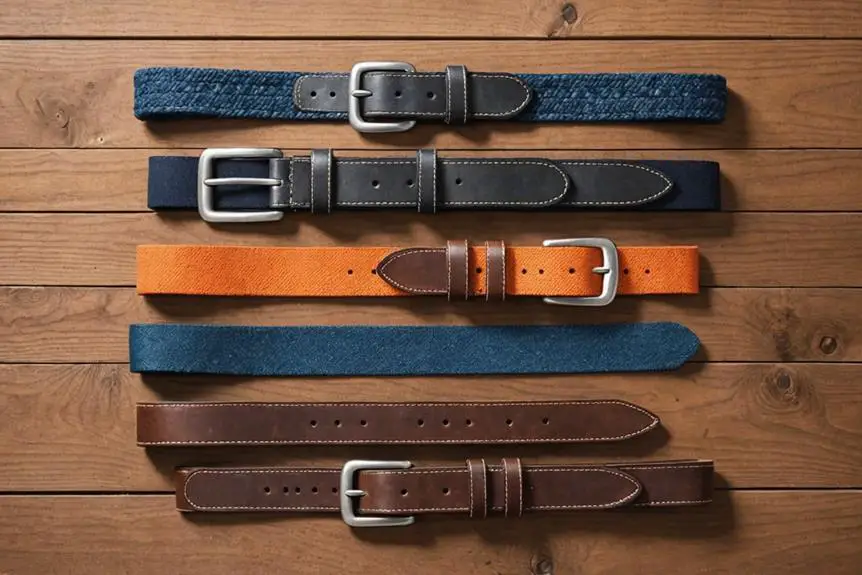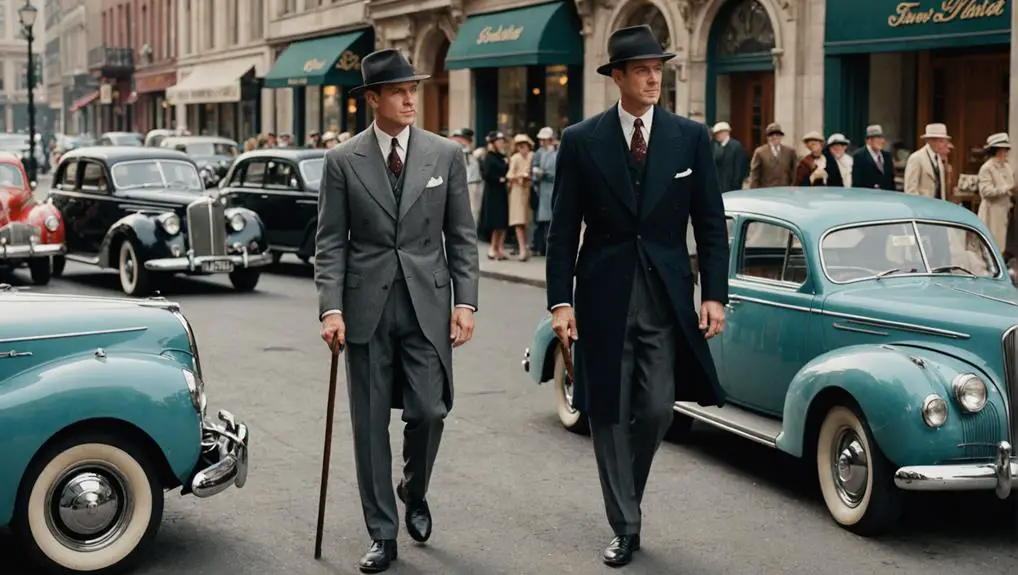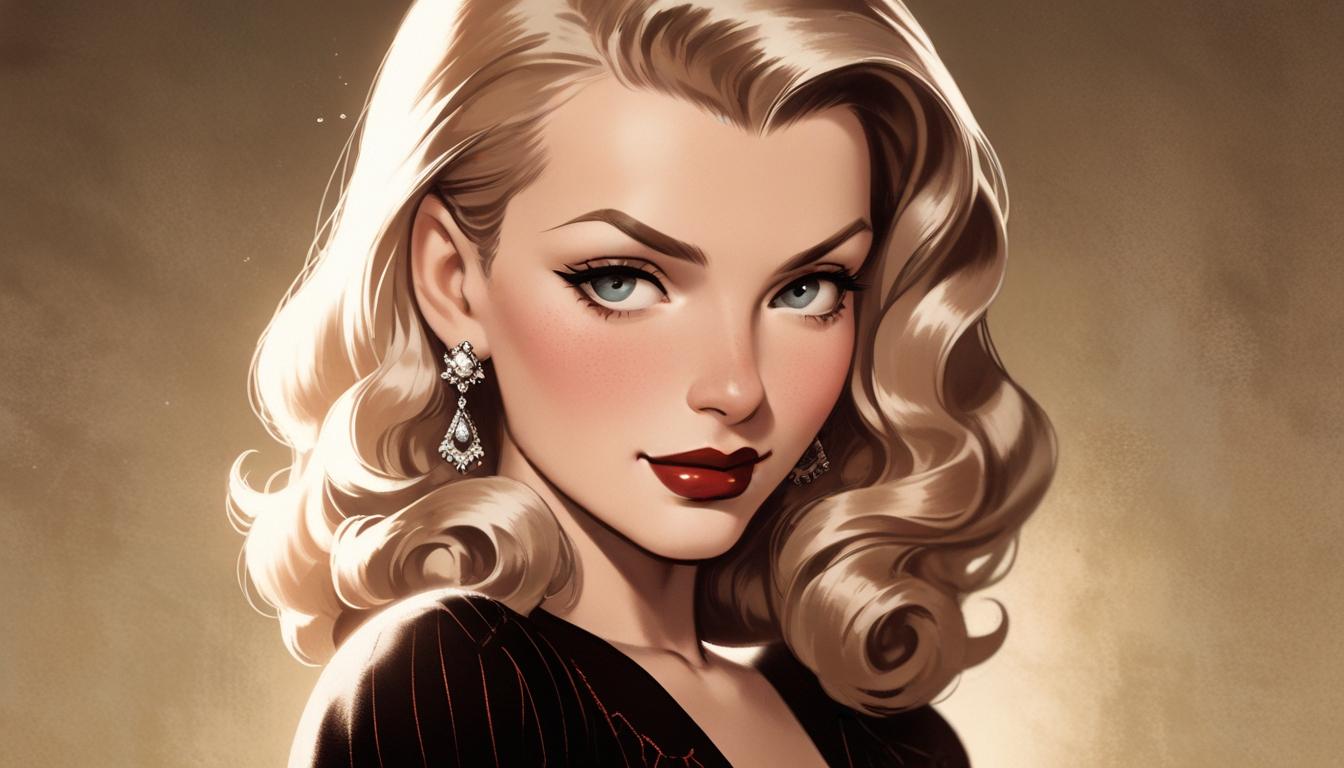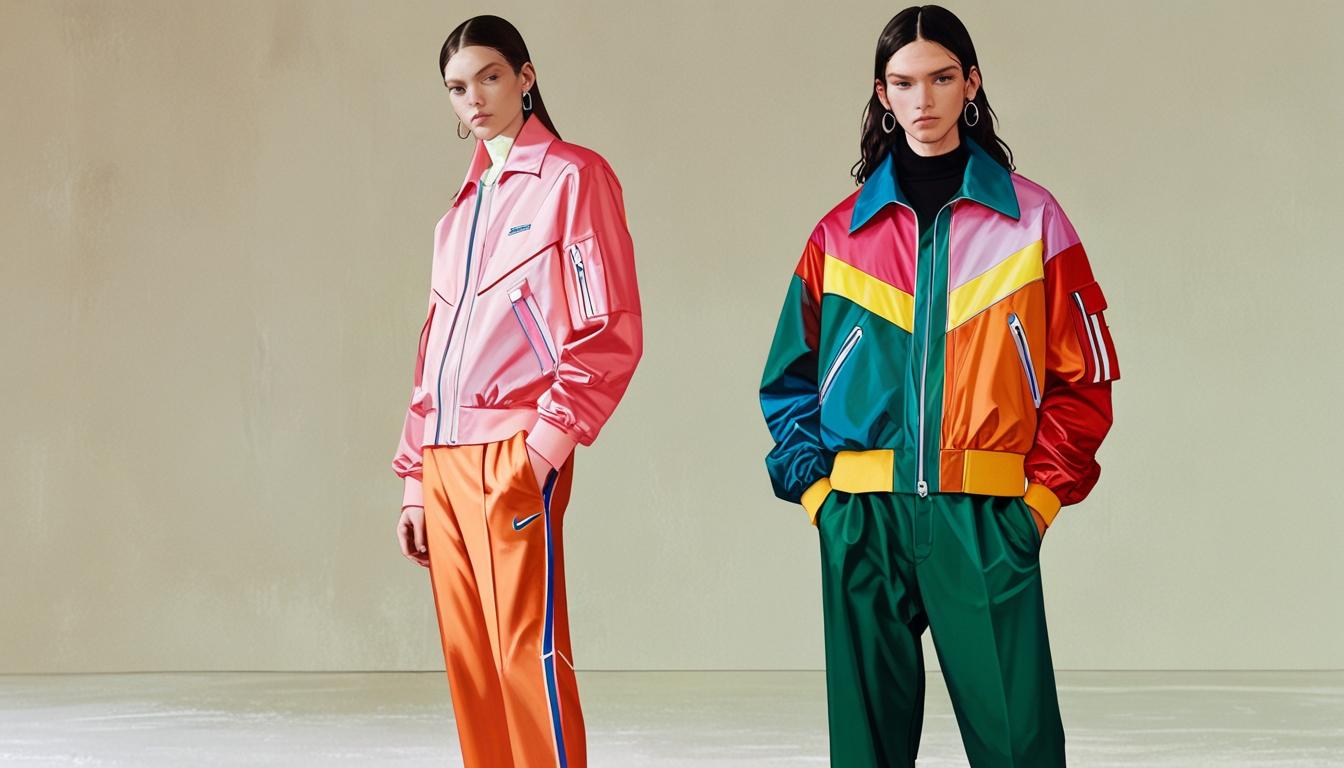When it comes to belts, you've got a world of options! Classic leather belts offer timeless elegance for both casual and formal occasions, while dress belts feature minimalist buckles for a polished look. Fabric belts are great for summer flair, and reversible belts give you the flexibility to switch up your style. If you're into outdoor activities, canvas belts are durable and easy to adjust. Let's not forget about unique buckle styles—prong, double-prong, and D-ring add flair and functionality. Whatever your style, there's a belt that complements your outfit perfectly, and there's so much more to explore about them!
History of Belts

The history of belts dates back to ancient civilizations like Egypt and Mesopotamia, where they primarily served to secure garments. These early belts laid the groundwork for what would become a staple accessory in fashion. Fast forward to the Middle Ages, and belts evolved into status symbols, often adorned with ornate buckles that reflected the wearer's wealth and rank. Imagine strutting around with a beautifully designed buckle that proclaimed your social standing!
During the Renaissance, belts maintained their importance, particularly for soldiers and aristocrats who required both style and functionality. You can see how the blend of practical functionality and fashion began to take shape, as belts became essential components of men's wardrobes. Then, enter the Industrial Revolution. This period revolutionized the production of belts, bringing them into the hands of everyday people through mass production. Suddenly, belts became accessible and affordable for a diverse range of social classes.
In the modern era, belts have taken on a life of their own. With a wide variety of styles available, they effortlessly cater to diverse tastes and occasions. Whether you prefer a classic leather belt or a trendy fabric option, there's something out there for everyone. Today, belts serve not just to hold up pants but to express individuality and style. From their ancient origins to contemporary fashion statements, belts have come a long way, showcasing how an accessory can evolve and adapt through time.
Types of Belts for Men
From their historical roots, belts have evolved into a diverse accessory that complements any man's wardrobe. Whether you're dressing up for formal occasions or enjoying a casual day out, the right belt can make all the difference. Here's a look at some essential types of belts for men:
- Classic Leather Belt: Timeless and versatile, this belt is a staple crafted from cowhide, available in smooth or textured finishes, and suits both formal and casual attire.
- Dress Belt: Specifically designed for formal occasions, dress belts feature high-quality leather, minimalist buckles, and classic colors like black, brown, or tan, ensuring you look sharp at any event.
- Fabric Belt: Lightweight and colorful, these belts are perfect for summer outfits, made from cotton or nylon, offering options in solid colors or vibrant patterns.
For versatility, consider a reversible belt that allows you to switch between colors or textures, maximizing your wardrobe without clutter. If you're planning outdoor activities, a canvas belt made from durable woven fabric is ideal; it's casual yet robust, perfect for relaxed wear and easy adjustments.
With these options, you can easily adapt between styles, ensuring that every outfit is complemented by the right belt. Each of these belts serves as an essential accessory, allowing you to express your style while remaining functional. So, whether you're dressing to impress or keeping it casual, you've got the perfect belt waiting for you!
Measuring Belt Size
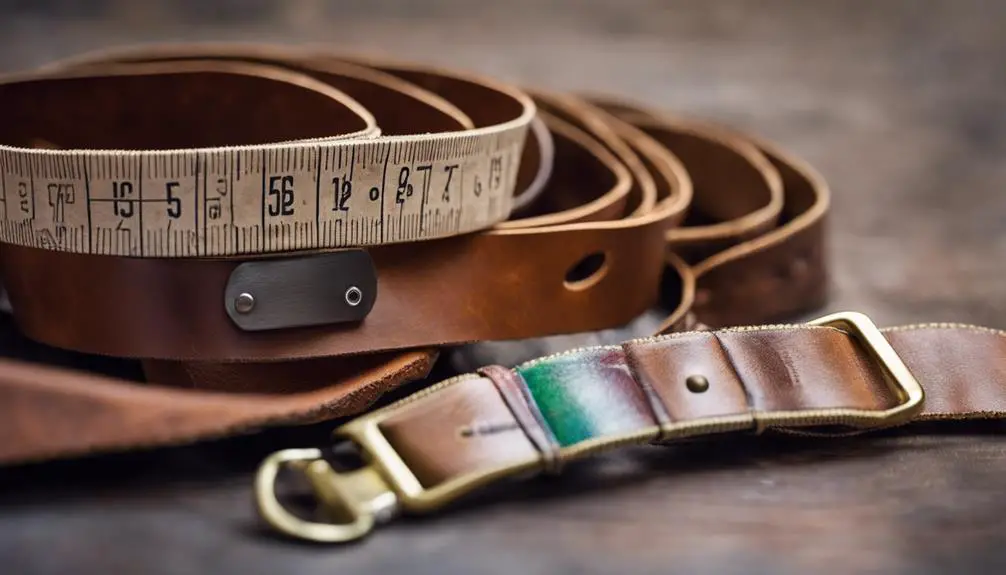
When it comes to finding the perfect belt size, getting an accurate measurement is vital for both comfort and style. To start, grab a flexible tape measure and wrap it around your waist at the spot where you typically wear your belt. Make sure it's snug but not too tight to guarantee a true measurement. After measuring, add about 2 inches (5 cm) to your waist measurement to find your ideal belt size, giving you that extra bit of comfort.
When you try on the belt, aim for a fit that allows a couple of fingers to fit comfortably between your waist and the belt. This confirms you've found a good balance between snugness and comfort. Most belts are designed to fit through the middle hole, so keep that in mind as you're evaluating the fit.
It's also essential to consult brand-specific size charts, as belt sizing can vary greatly between manufacturers. This means that a size large in one brand may not be the same in another, so always double-check! Additionally, consider the thickness of clothing you'll be wearing with the belt; thicker clothing often requires a longer belt size.
Styles and Buckles
Now that you've got your belt size down, let's explore the exciting world of styles and buckles! From the timeless classic buckle variations to unique designs that add flair, you'll discover how the right buckle can elevate your outfit. Plus, with functional types like double-prong and slide buckles, you can combine practicality with style, ensuring you look great while staying comfortable.
Classic Buckle Variations
Classic buckle variations play an essential role in defining the style and functionality of belts, enhancing both appearance and utility. Each buckle type brings its own charm and purpose, guaranteeing you find the perfect match for your needs.
- Prong Buckle: This classic option features a single tongue that secures the belt into one of its holes, providing a reliable fastening mechanism for various styles.
- Double-Prong Buckle: Offering added stability, this buckle includes two prongs for a more secure fit, making it ideal for thicker, work-oriented belts designed for durability.
- Frame Buckles: Encasing the belt's end, frame buckles provide a sleek, polished look, often paired with leather belts for formal attire.
Additionally, slide buckles allow for adjustable tightness without the need for holes, while decorative buckles serve as stylish fashion statements, enhancing the belt's overall aesthetic. By choosing the right buckle, you not only guarantee a secure fit but also elevate your outfit with a touch of sophistication. So next time you're selecting a belt, consider how these classic buckle variations can reflect your personal style while delivering functionality.
Unique Buckle Designs
Belts offer more than just functionality; they can also showcase unique buckle designs that elevate your style. Each buckle type brings its own flair and practicality to your wardrobe. For instance, prong buckles, featuring a single tongue, provide a classic and reliable fastening mechanism, making them a staple in traditional leather belts. If you're looking for extra stability, double-prong buckles enhance your secure fit, ideal for thicker belts and active wear.
Frame buckles encase the end of the belt, offering a clean look and easier adjustments, often found in both casual and dress belts. If you prefer a modern touch, slide buckles employ a sliding mechanism without holes, giving you customizable tightness and a sleek appearance that's perfect for fashion-forward designs.
Lastly, D-ring buckles consist of two D-shaped rings, which allow for an adjustable fit without predefined holes, making them a versatile choice for casual and military-style belts. With these unique buckle designs, you can express your personal style while ensuring a secure and adjustable fit, whether you're dressing up or keeping it casual.
Functional Buckle Types
What makes a buckle functional and stylish? The right buckle can elevate your belt game, combining practicality with aesthetics. Understanding the different types of functional buckles helps you choose the best fit for your wardrobe needs.
- Prong Buckles: The most common style, featuring a single tongue that secures the belt through holes, perfect for everyday wear.
- Double-Prong Buckles: These offer added stability with two prongs, making them ideal for heavier belts or when you need extra tightness.
- Frame Buckles: Encasing the belt within a polished frame, this style shines in dress belts, giving a refined look for formal occasions.
You'll also find slide buckles, designed for belts without holes, allowing for an adjustable fit by sliding the buckle along the strap. D-ring buckles feature two D-shaped rings that provide a simple, adjustable fastening mechanism, commonly seen in casual and military belts.
Choosing the right buckle not only enhances the functionality of your belt but also makes a stylish statement. Whether you opt for prong, double-prong, frame, slide, or D-ring buckles, each one offers unique benefits to elevate your outfit!
Care and Maintenance
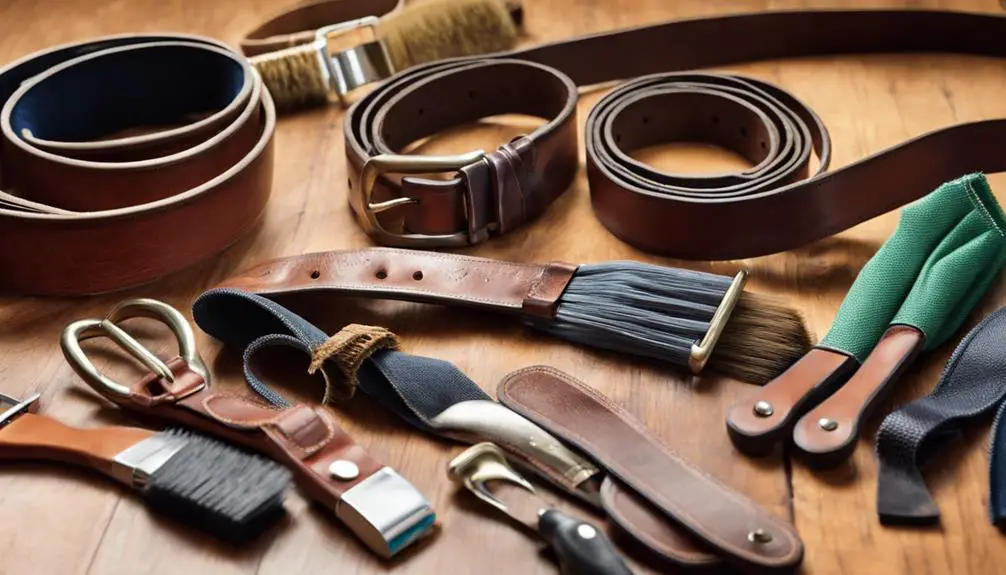
Taking care of your belts isn't just about keeping them looking good; it's essential for their longevity. You'll want to adopt regular cleaning techniques, like using a damp cloth for leather and spot-cleaning fabric belts, while also ensuring you store them properly to prevent creasing. By following these simple practices, you can keep your belts in top shape and ready to elevate any outfit!
Regular Cleaning Techniques
Maintaining your belts is essential to guarantee their longevity and appearance. Regularly inspecting your belts for signs of wear or damage, such as fraying or buckle corrosion, is vital. Depending on the material, different cleaning techniques are necessary to keep them in prime condition.
- For leather belts, wipe off dirt with a damp cloth, and every few months, apply leather conditioner to maintain suppleness and prevent cracking.
- Fabric belts can be spot cleaned with mild soap and water, then air-dried to avoid shrinking or damaging the material.
- For braided or canvas belts, gently brush off debris with a soft brush and wash them in cold water if necessary, ensuring they're laid flat to air dry.
Proper Storage Practices
Proper storage of your belts is essential for preserving their shape and extending their lifespan. To implement proper storage practices, you should store belts flat or rolled, as this helps avoid sharp folds that can lead to permanent damage. When it comes to leather belts, keep them in a cool, dry place, away from direct sunlight and heat sources, which can dry them out and cause cracking.
Using a breathable fabric bag or a box for storing your belts not only protects them from dust and moisture but also allows for essential air circulation. Make it a habit to regularly inspect belts for wear or damage, ensuring they remain in top condition. When cleaning your belts, always use appropriate products to maintain their appearance and longevity.
Additionally, avoid hanging belts on hooks, as this can distort their shape. Instead, consider using dedicated belt hangers that support their structure, keeping your collection organized and pristine. With these simple steps, you'll keep your belts looking fabulous for years to come, ensuring they're always ready for any outfit!
Importance of Belts
Belts are essential accessories that can greatly enhance your outfit's overall appearance and fit. They play a significant role in improving body proportions and enhancing overall fit by defining your waistline, making your ensembles look polished and put-together. With a variety of designs and materials available, belts serve not only functional purposes—like securing clothing—but also allow you to express your personal style.
Here are a few reasons why belts are important in your wardrobe:
- Versatile accessories: Belts can be paired with both formal and casual outfits, making them suitable for any occasion.
- Transform basic outfits: A well-chosen belt can elevate even the simplest looks into sophisticated ensembles, acting as a statement piece or a subtle accent.
- Complement body type: Selecting the right belt can enhance your figure, contributing to overall comfort and confidence in your fashion choices.
Incorporating belts into your wardrobe is vital for important wardrobe styling. Whether you're dressing for a business meeting or a casual outing, the right belt can dramatically improve your appearance. By improving body proportions and enhancing overall fit, belts become more than just accessories; they're tools for showcasing your personal style. So, the next time you throw on an outfit, remember that a well-chosen belt can be the finishing touch that ties everything together, making you feel confident and stylish!
Frequently Asked Questions
Are There Different Types of Belts?
You've got casual belts like fabric or elastic ones for laid-back vibes, while leather and reversible belts serve formal occasions. Wide belts make bold statements, and utility belts combine style with functionality.
How Many Types of Belts for Men?
You'll find various types of belts for men, including dress belts for formal occasions, casual belts like woven and canvas options, and functional choices like tool, tactical, and elastic belts to suit every need.
What Are Belts Without Holes Called?
Belts without holes are called ratchet belts. You'll find a variety of buckle styles and materials used, reflecting current belt design trends. They're practical, making fashion statements while being easy to maintain and size effectively.
How Many Types of Belts Are There in UFC?
In UFC, you'll find various championship belts, including undisputed champion belts and interim championship belts. Each weight class has its own criteria for title defenses, showcasing promotional significance and unique belt design variations during presentations.
